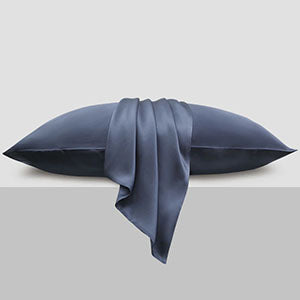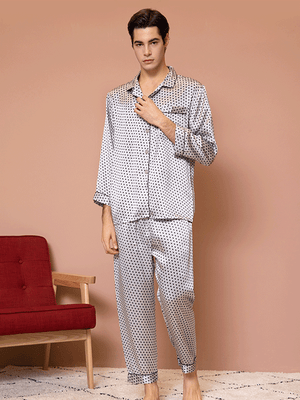Can You Be Allergic to Silk Pillowcases? Exploring the Surprising Truth
- by wangfred
-

Imagine slipping into bed each night, resting your head on a smooth, luxurious silk pillowcase—only to wake up with itchy skin, redness, or congestion. Could your prized bedding be the culprit? While silk is often marketed as a hypoallergenic wonder, the reality is more nuanced. Let’s unravel the mystery of silk allergies and uncover whether your pillowcase might be secretly sabotaging your sleep.
What Is Silk Made Of—And Could It Cause Reactions?
Silk is a natural protein fiber produced by silkworms, primarily composed of fibroin. Unlike synthetic materials, it lacks harsh chemicals, which makes it a popular choice for sensitive skin. However, proteins themselves can sometimes trigger immune responses. For those with protein-based allergies (e.g., to dust mites or animal dander), silk’s molecular structure might cross-react, leading to unexpected symptoms.
The Hidden Culprits: Allergens Beyond the Fabric
True silk allergies are rare, but other factors linked to silk pillowcases could provoke reactions:
- Residual sericin: A sticky protein coating silk threads; some processing methods leave traces that irritate skin.
- Dyes and finishes: Low-quality silk may contain allergenic dyes or formaldehyde-based treatments.
- Dust mites: Silk’s breathability reduces moisture, but poor cleaning habits can still allow allergen buildup.
Silk Allergy Symptoms: How to Spot the Signs
Reactions may mimic seasonal allergies or contact dermatitis:
- Red, itchy rash along the face, neck, or shoulders
- Sneezing, nasal congestion, or watery eyes
- Hives or swelling where skin contacts the fabric
These symptoms typically appear within hours of exposure. Chronic issues like eczema flare-ups may also develop over time.
Silk vs. Other Fabrics: How Does It Compare?
While cotton and synthetics like polyester are more common allergen sources, silk’s unique properties deserve scrutiny:
- Breathability: Silk wicks moisture better than synthetics, reducing bacterial growth—a plus for acne-prone skin.
- pH balance: High-quality silk has a neutral pH, unlike wool, which contains lanolin that irritates some users.
- Weave tightness: Silk’s dense fibers block dust mites better than loose-weave cotton.
Testing for Silk Sensitivity: Steps to Take
Suspect an allergy? Try these steps:
- Patch test: Place a silk swatch on your inner arm for 48 hours.
- Switch temporarily: Use a different pillowcase for a week and monitor symptoms.
- Consult an allergist: Skin prick or IgE blood tests can confirm protein sensitivities.
Hypoallergenic Silk: Does It Exist?
Some manufacturers offer “hypoallergenic” silk, which undergoes rigorous washing to remove sericin. Look for:
- Oeko-Tex or GOTS certifications (ensures chemical safety)
- Undyed, unbleached options
- Mulberry silk (higher purity than wild varieties)
Alternatives for Sensitive Sleepers
If silk isn’t your match, consider:
- Bamboo-derived rayon: Naturally antimicrobial and temperature-regulating.
- Tencel lyocell: Made from wood pulp, resists dust mites.
- Organic cotton: Opt for tightly woven, long-staple varieties.
Caring for Silk to Minimize Irritants
Proper maintenance reduces allergy risks:
- Wash weekly in hypoallergenic detergent at 30°C (86°F)
- Avoid fabric softeners—they leave residue
- Store in breathable cotton bags, not plastic
While silk pillowcases aren’t a universal allergen, individual sensitivities can turn bedtime into a battle. By understanding the triggers and exploring alternatives, you can reclaim restful sleep without sacrificing luxury. Remember: The best pillowcase isn’t the most expensive one—it’s the one that lets you wake up refreshed and reaction-free.












